Before and After: Reflections on the 9/11 Memorial and Museum
The events of Sept. 11, 2001, form a pivot point in our history and collective imagination, separating what we recall, however naively, as the relative quiet of the late 20th century from the endless war on terror that still grips and shapes the 21st. The events of Sept. 11, 2001, separate what we recall as the relative quiet of the late 20th century from the endless war on terror that still grips and shapes the 21st.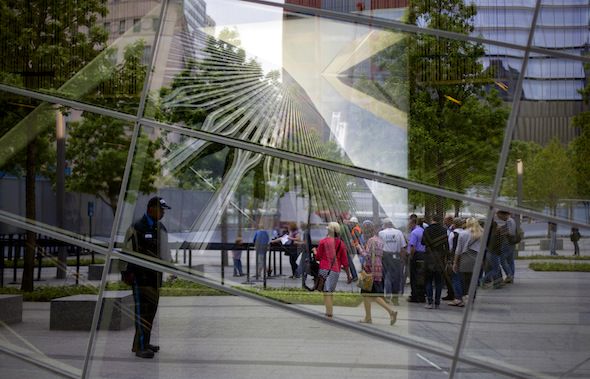
The events of Sept. 11, 2001, form a pivot point in our history and collective imagination, separating what we recall, however naively, as the relative quiet of the late 20th century from the endless war on terror that still grips and shapes the 21st.
The recently completed 9/11 Memorial and Museum at Ground Zero in lower Manhattan — which I toured earlier this month — is an attempt to make sense of that pivot on multiple levels. The site is at once a building and an urban space dedicated to depicting the carnage of a tangible event in which the twin towers of the World Trade Center were brought crashing down in toxic clouds of fire and dust, and a “before-and-after” symbol, the phrase used by actor Robert De Niro in his narration on the museum’s audio guide to describe his own 9/11 journey as a native New Yorker.
The museum’s website also explains the project’s mission as having several goals: bearing “solemn witness” to the attacks of 9/11 and the earlier Feb. 26, 1993, truck bombing of the World Trade Center; honoring the 2,983 victims of those incidents; paying homage to the survivors and first responders; and demonstrating “the consequences of terrorism on individual lives and its impact on communities at the local, national, and international levels.”
But does the many-faceted attempt at explication and symbol actually succeed? There is no question about the project’s artistry, the austere magnificence of the museum building, the gut-wrenching exhibits housed inside, or the sad and quiet beauty of the surrounding memorial park. Yet for all its pluses and with a construction price tag topping $700 million, the project as a whole fumbles the narrative of why the victims of 9/11 perished and what their tragic deaths have wrought for the rest of us.
I made my first pilgrimage to Ground Zero less than a year after the two hijacked airplanes — American Airlines Flight 11 and United 175 — had crashed into the north and south towers. Although most of the debris had been removed by the time I arrived, the attacks had left a yawning chasm that scarred the landscape. I stood awestruck and somber along with many others, including my two young sons, who had come to pay their respects, peering through the chain-link fences erected along the perimeter of what once had seemed an invulnerable fortress of trade and finance as teams of construction crews operating earthmovers, giant cranes and a procession of dump trucks worked to pave the way for eventual rebuilding.
The first thing a casual visitor notices today, now that the rebuilding is nearly complete, is the sheer vastness of the undertaking. The Freedom Tower — a shimmering glass and steel obelisk of quartz-like perfection set to open later this year — tapers, some might say, in patriotic parody precisely 1,776 feet above the site, making it the nation’s tallest building.
Sitting below the new skyscraper is the park — an immense plaza officially opened in 2011. Spanning six acres, the park is lined with cobblestones and delicate swamp white oak trees selected from nurseries located in New York as well as Washington, D.C., and Pennsylvania, the other two locations where on 9/11 hijacked planes slammed, respectively, into the Pentagon and an open field 60 miles southeast of Pittsburgh.
The park showcases two 1-acre rectangular reflecting pools set in the footprints of the old twin towers. Each consists of identical sets of waterfalls that cascade down sheer 30-foot walls, and seemingly disappear into dark voids at their centers. The names of the victims of 9/11 as well as the casualties of the Pennsylvania and Pentagon crashes and those who died in the 1993 bombing are etched in bronze around the raised marble edges of the pools. Standing by the water, my eyes were drawn to the names. I touched some of the etchings and imagined, if only for a few seconds, the death, dying and horror each name signifies.
Death, dying and horror are very much the themes inside the museum as well. Fittingly, apart from an arching glass-encased atrium-style entrance and a second-floor auditorium, the bulk of the museum is windowless and underground, constructed deep into the bedrock. Guests descend as if passing through increasingly intense gates of despair 70 feet by way of a staircase that runs alongside the Tridents, the 80-foot tall neo-Gothic steel columns that stood outside the base of the Trade Center. Audio recordings broadcasting the prayers and remembrances of over 400 people from around the world can be heard as their words and geographic locations are projected on a series of free-standing vertical panels.
At the bottom of the staircase, a winding walkway ramp empties onto a cavernous hall dominated by the Last Column, the enormous steel girder that was the final pillar hauled away from the tower wreckage. On one end of the giant chamber is the Slurry Wall, a pockmarked, iron-studded remnant from the original foundation that survived the destruction, flooding and fire. Around the bend, emblazoned on a striking wall of 2,983 blue tiles is a quote from Virgil’s “Aeneid”: “No Day Shall Erase You From the Memory of Time.” From there, the museum’s visceral quality only deepens in a series of galleries packed with artifacts large and small: a New York City Fire truck charred in the initial response to the raging inferno, a segment of the north tower’s radio and television antenna, a fried section of an elevator motor, and displays of everyday personal effects carried and worn by the dead — scraps of clothing and shoes, especially high heels discarded by women who fled the buildings or died trying to escape. There is even a torn seatbelt from one of the planes.
On the walls of another large room color photos of the victims hang like head shots from a high school yearbook. A smattering of high-tech table-top tablets around the room allows visitors to tap the photos and call up individual bios, bringing each briefly back to life.
Another exhibit presents an extended timeline of 9/11, captured by film clips showing the planes smashing into the towers, and an alcove containing photos of trapped victims jumping from the collapsing inferno enveloping them. There is also a precise minute-by-minute narrative set forth in video and text of the day’s events, beginning with footage from 5:45 a.m. of two of the hijackers passing security at the Portland International Jetport in Maine and continuing tick by tick through the impact on the north tower at 8:46 a.m., the New York Port Authority’s hapless 8:55 a.m. public announcement to the occupants of the south tower that their building was safe, and the south tower attack that took place a mere eight minutes later at 9:03.
The museum delivers the imagery of death with the emotional wallop of a vicious punch to the solar plexus. The same, however, cannot be said of the weak, incomplete and controversial explanation it offers the viewing public of the causes of 9/11 and its momentous aftermath.
At the heart of the controversy is a seven-minute film, “The Rise of Al Qaeda,” narrated by NBC anchor Brian Williams, which plays in a historical display on a continuous loop, tracing the terrorist group to the mujahedeen resistance movement against the Soviet invasion of Afghanistan. Williams speaks over images of terrorist training camps and various al-Qaida attacks over roughly a 15-year period, linking the group’s deeds to its embrace of a radical jihadist ideology.
The film’s release sparked a storm of protest from local Muslim leaders who charged that it conflated Islam in general with the perversions of an isolated minority. Thus far, the museum’s governing board has rejected requests for additional editing from members of an interfaith advisory group that helped vet the documentary. The board, which runs the museum as a nonprofit foundation chaired by former New York City Mayor Michael Bloomberg, maintains that the film, together with other displays, makes the necessary distinctions between al-Qaida and mainstream Islam.
Even if the board’s position on the film is sincere and technically correct, the museum nonetheless falters badly in key respects. None of the exhibits acknowledge the American role in nurturing the mujahedeen or so much as mention the close collaboration between the Reagan administration and the Saudi government in the effort to raise funds for the resistance fighters and to supply them with arms, equipment and training. Nor does the museum explore the deplorable intelligence failures of the Bush administration that allowed the hijackers to live and work undetected in the U.S. and to carry out their plans.
There have also been legitimate complaints from both visitors and the families of the victims about the museum’s steep $24 admission fee and the facility’s tacky gift shop that hawks commemorative T-shirts, scarves and coffee mugs — all of which along with private donations help pay for an annual $63 million operating budget that the board has to raise without any ongoing government grants.
But for my $24, the museum’s greatest shortcoming and its biggest missed opportunity rests in a dark room off the main hall in an exhibit entitled “Reflecting on 9/11.” Here, visitors can view short video interviews with celebrities like De Niro and Billy Crystal, former government officials and politicians such as Colin Powell, Bill and Hillary Clinton and Donald Rumsfeld, along with first responders and victims’ family members as they answer questions about the deeper meaning of the tragedy.
The exhibit could have been the perfect venue for informed commentary not only about the details of 9/11 as a day of invidious destruction but about the broad sweep of 9/11’s transformational repercussions. In truth, those repercussions led directly to our invasions of Afghanistan and Iraq, nearly bankrupting the country in the process, and turning us into the most sophisticated surveillance state the world has ever seen. What the exhibit offers instead are a few empty platitudes from Powell and Bill Clinton about the need to strike a balance between national security and personal liberty, and the nattering of Rumsfeld about “known knowns” and “unknown unknowns,” which I now understand more clearly than ever as the former defense secretary’s way of forever avoiding any responsibility for making such a mess of the American response.
Outside the museum emerging into the bright sunlight of an early June afternoon with my visit over, my thoughts drifted to Zuccotti Park, where just a few blocks away Bloomberg had ordered police to brutally remove the last of the Occupy Wall Street protesters in November 2011. That regrettable chapter in our recent history is also part of the 9/11 story, a piece of the larger “before and after” that this mighty memorial and museum only partially reveals.
Your support matters…Independent journalism is under threat and overshadowed by heavily funded mainstream media.
You can help level the playing field. Become a member.
Your tax-deductible contribution keeps us digging beneath the headlines to give you thought-provoking, investigative reporting and analysis that unearths what's really happening- without compromise.
Give today to support our courageous, independent journalists.
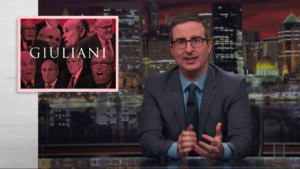
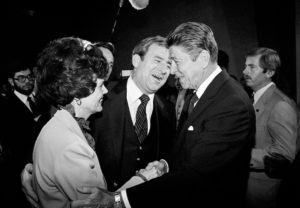
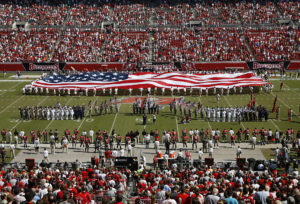
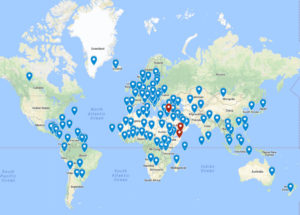
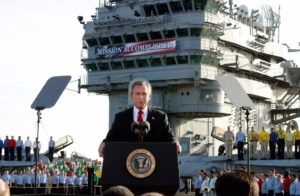
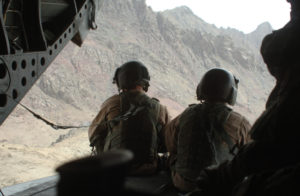
You need to be a supporter to comment.
There are currently no responses to this article.
Be the first to respond.